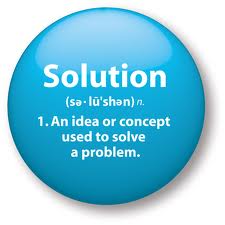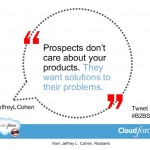 As posted in TheCustomerCollective.com
As posted in TheCustomerCollective.com
Consumers have adopted a new definition of value that encompasses not just price and brand, but also convenience. Part of that convenience is you solving their problem for them, so they don’t have to. Customers don’t want to hear about how great your company is or how wonderful your products are. They want to have their concerns answered.
Let’s see this in action in the example of Best Buy, the consumer products retail giant. From Ranjay Gulati’s article, Best Buy took the time to understand who its customers are and what they need and then started selling solutions instead of products. As part of its research, for example, Best Buy discovered that 55 percent of its customers were women, and that for the most part they didn’t necessarily enjoy their Best Buy shopping experience.
Best Buy found that whereas men look for a specific product at a discount price, women want more. Their female customers weren’t looking to quickly come in and buy a digital camera, but were interested in an entire solution, including a printer, cable, and other accessories. Their study found that delivering this solution, was far more important to their customers, than product price alone. Equally important, they want help with installation–deliver the total solution, and do so full-circle.
Best Buy ingrained a customer solution focus into its marketing approach and sales culture.
Solution Identification
Define your business in customer benefit terms. What do customers want from products like yours? Why should someone buy your product? What benefits or results will the customer receive from doing business with you? What will your product do for them? Your “concept” is your solution to your customer’s problems. Once you are clear on what customer problem(s) you’re solving, you can begin offering parts of it in your sales and marketing strategy.


